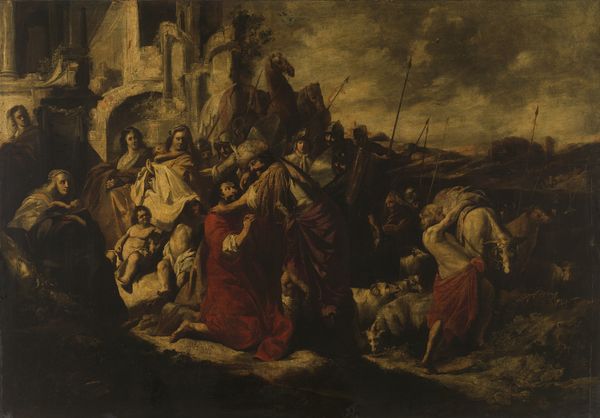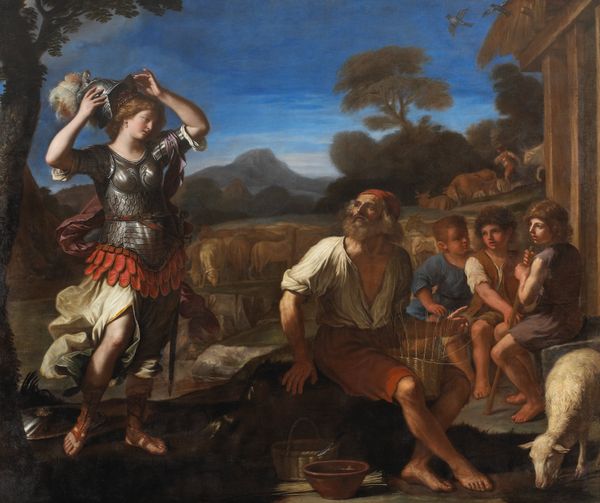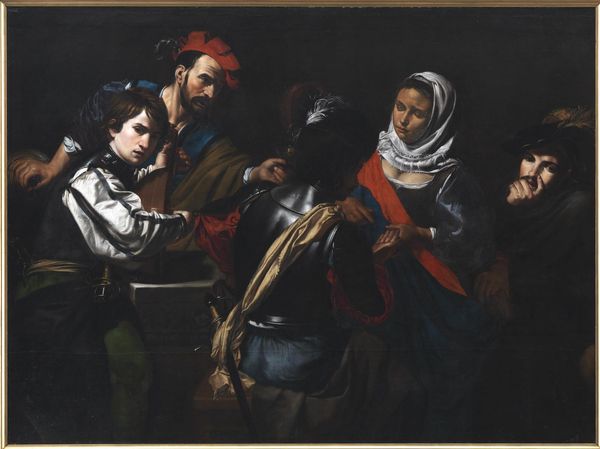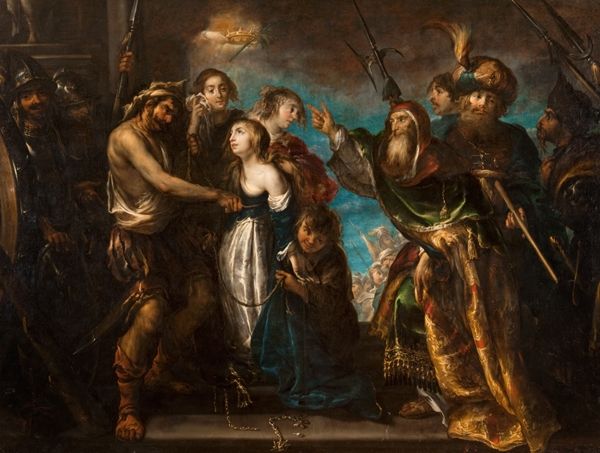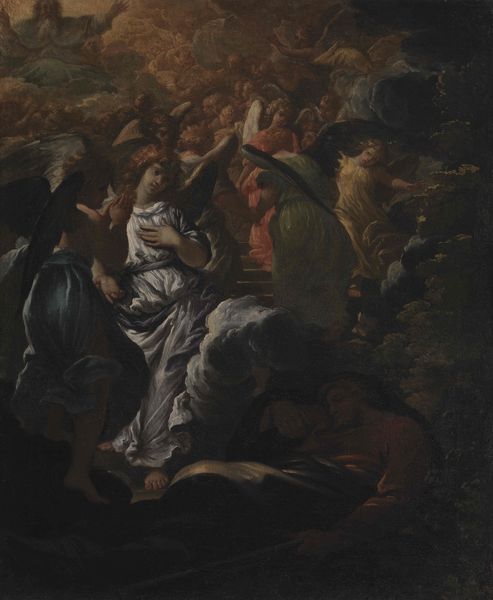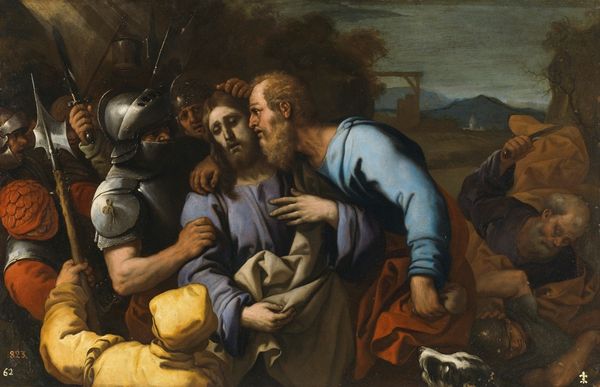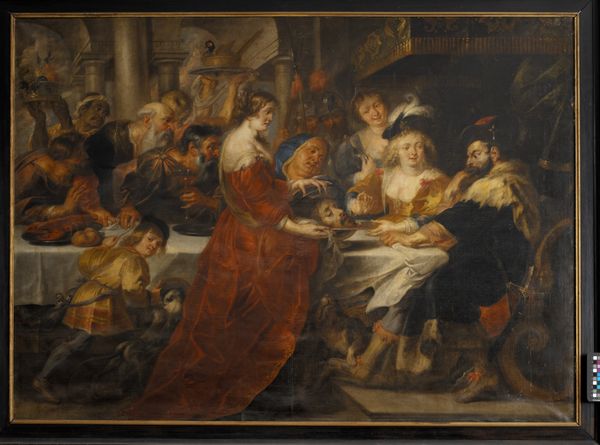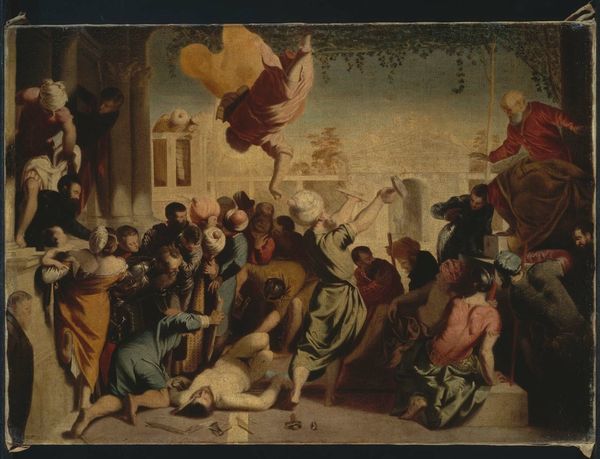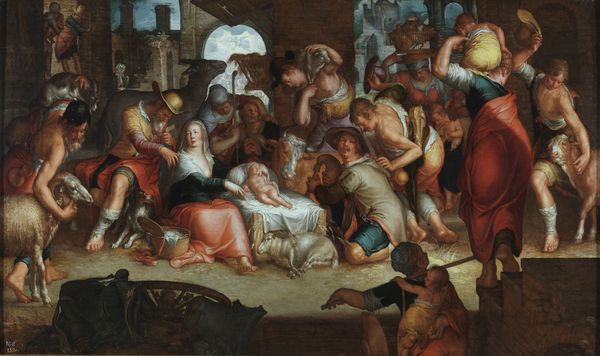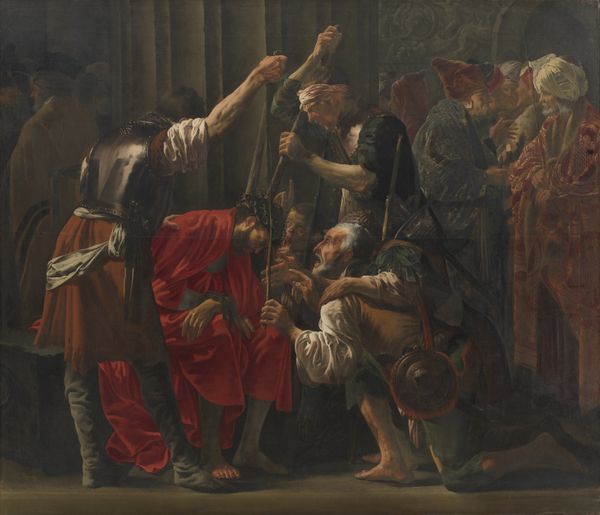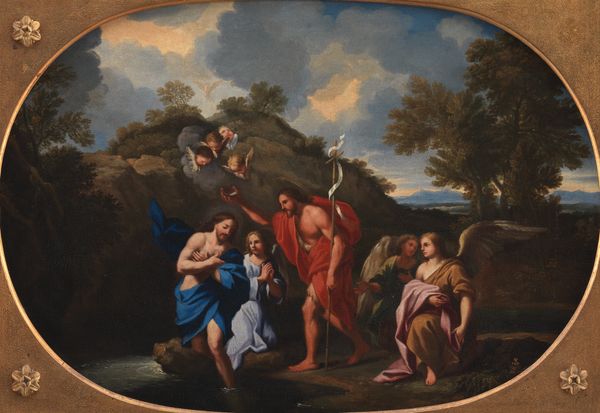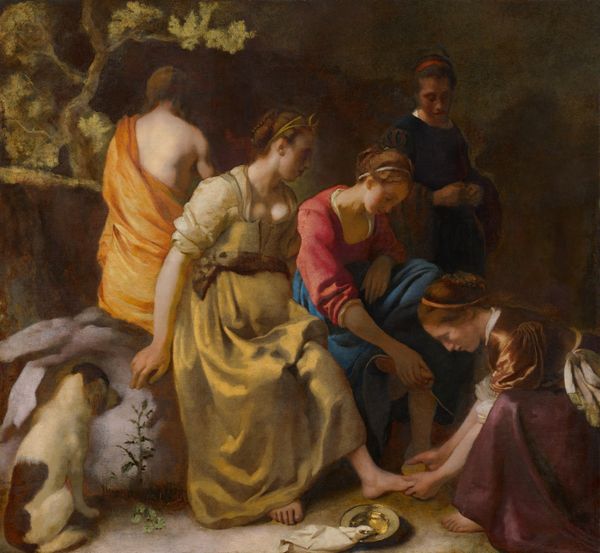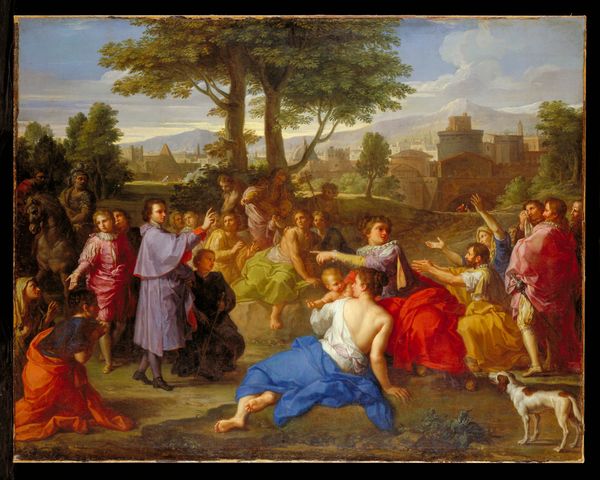
oil-paint
#
narrative-art
#
baroque
#
oil-paint
#
figuration
#
oil painting
#
history-painting
Dimensions: 77 3/4 x 88 in. (197.5 x 223.5 cm)
Copyright: Public Domain
Curator: "The Sacrifice of Polyxena," an oil on canvas created between 1630 and 1662, comes to us from Giovanni Francesco Romanelli and currently resides at the Metropolitan Museum of Art. Editor: Well, it's a visually dramatic piece. The way Romanelli uses a somewhat desaturated color palette lends the entire scene a sort of gravity that works well for a tragic subject. Curator: Indeed. It depicts a scene from Greek mythology. Polyxena, daughter of King Priam of Troy, is being sacrificed, a tribute demanded by the ghost of Achilles. It is filled with symbolism, pointing toward themes of atonement and fate. Consider the averted gaze of many figures – it speaks volumes about their complicity, a common motif in depicting sacrifice. Editor: Structurally, I'm drawn to the strong diagonal lines, from the executioner’s raised knife to the base of the altar. It's as though the entire composition is pressing down, visually enacting a kind of fatalistic closing. And that clear blue sky is in such stark contrast to the events unfolding. Curator: That’s an astute point. The presence of sky, often associated with the divine, makes one question how a 'just' divine order can allow such actions. What kind of god demands human sacrifice? I am drawn to the almost indifferent gaze of those on the periphery – a sad reminder that even barbarity becomes commonplace when routinized. Editor: Note the specific ways Romanelli renders the fabric, which feels intentionally theatrical, designed to draw our eyes towards the emotional core—Polyxena herself. I’d argue that it is meant to communicate a psychological space of grief and terror that surrounds her. Curator: Looking closely, you are quite right! Her almost tranquil resignation speaks of another level of courage or defeat. What is she surrendering to here, Romanelli prompts us to wonder: the will of the gods, brute force, or maybe just inevitability itself? This image carries its potency across centuries as a meditation on human ritual and purpose. Editor: I agree, this is much more than just another Baroque exercise in conveying emotion—it encourages sustained critical engagement with difficult realities about our relation to history. I can't look away.
Comments
No comments
Be the first to comment and join the conversation on the ultimate creative platform.
